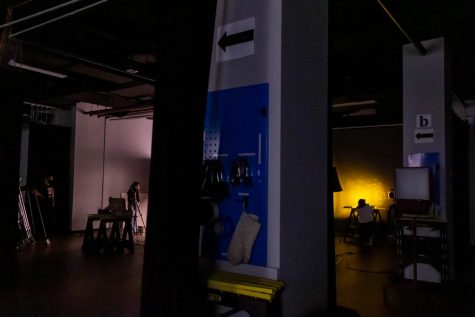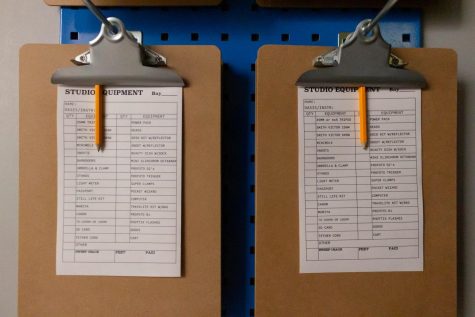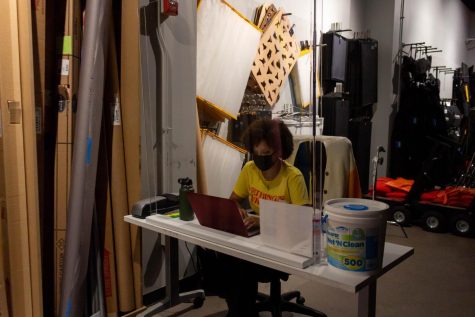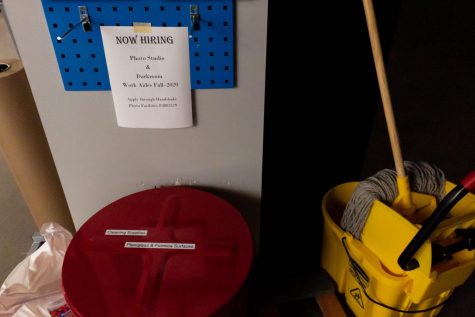Photography Lighting Studio shines even in dark times
December 9, 2020

Upon entering Columbia’s Photography Lighting Studio, staffers stand behind a thick plastic barrier and immediately ask visitors to wash their hands. The purple poster that hangs on the sink reads, “Hum the ‘happy birthday’ song twice!” as a reminder to wash hands for the proper amount of time. When finally looking up from scrubbing, the vast studio, located on the second floor of 1104 S. Wabash Ave., is nearly empty.
With concerns of the COVID-19 pandemic still prevalent as the semester winds down, the lighting studio has worked to keep students safe while they attend class and work on projects in person. The 6,800-square-foot studio allows students to create custom backdrops and scenes as well as to experiment with lighting.
“Anyone that comes in, they first have to wash their hands and then there are clipboards with sheets of paper on it, and that’s when they can mark off the equipment they need,” said Rita Dennin, a senior interdisciplinary documentary major who works in the lighting studio.

Dennin said once people are done with the equipment, studio staffers wipe it down and complete another mandatory hand washing before leaving the studio.
Students with classes in the studio are only allowed to bring in one person to help with their photos, whether they are a model or an assistant, and everyone is required to wear masks at all times, while also social distancing, Dennin said.
While most of the hybrid photography course have been moved to fully remote, a few still remain in-person until the end of the semester, as reported by the Chronicle.

Autumn Macdonald, a junior photography major, said while the restrictions have limited their creativity, they are grateful the studio remained open and available during the semester.
“[COVID-19] is a con, but there are so many pros, like the fact that we can be in person, that we can take photos and we can keep learning,” Macdonald said. “Because of [the pandemic], I thought I would actually have to stop my learning, but honestly I’m still progressing.”
Dennin, who also works in the computer lab on the ninth floor of 623 S. Wabash Ave., said the college could have done more in communicating its COVID-19 protocols to students, such as how the equipment is sanitized and plans for next semester.

“Of course students can come in or call and ask, ‘How do you sanitize it?’ and we will be open about it,” Dennin said. “But there needs to be a departmentwide training or something [that] lets people know what’s new and everything.”
Ross Sawyers, chair of the Photography Department, said the department made sure to follow the guidelines Columbia provided, including social distancing, proper sanitation of equipment and the requirement that masks be worn at all times.

Sawyers said he completely changed the syllabus for the one class that he is teaching this semester, as have many teachers, to accommodate students who feel more comfortable not being in person.
Students who wanted to have in-person classes were always welcome to hold their critiques on campus, and those who wanted web classes had the option to stay home, Sawyers said.
He said while the work he saw this past semester was different and interesting, he wished he could have seen more from students.
“I think the most important thing anyone can do, whether you’re a photographer or journalist or musician or whatever, is to keep doing the thing that you do,” Sawyers said. “Keep practicing your craft, and let your craft help you process what’s happening. I’m seeing so many students doing that and it’s inspiring.”







